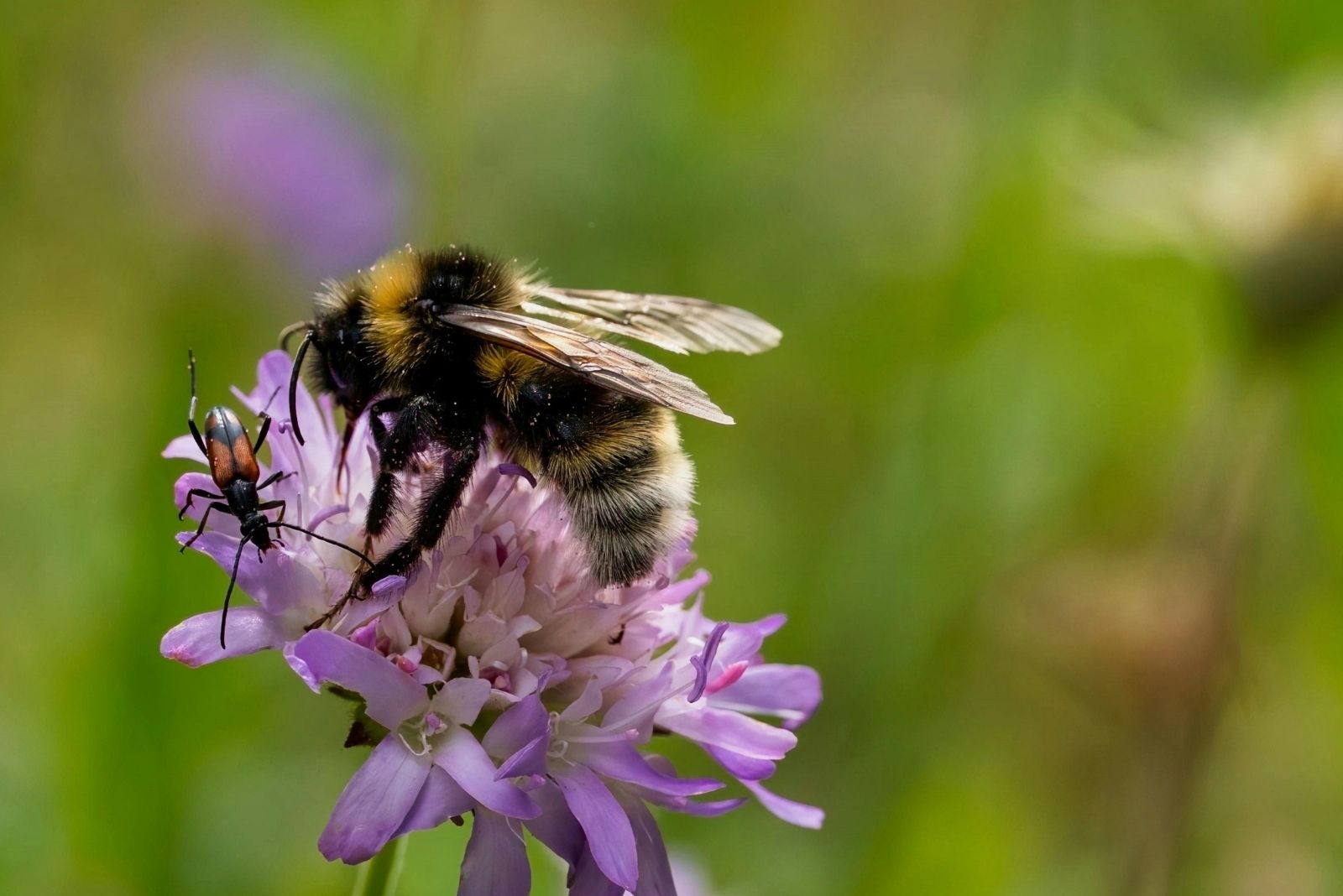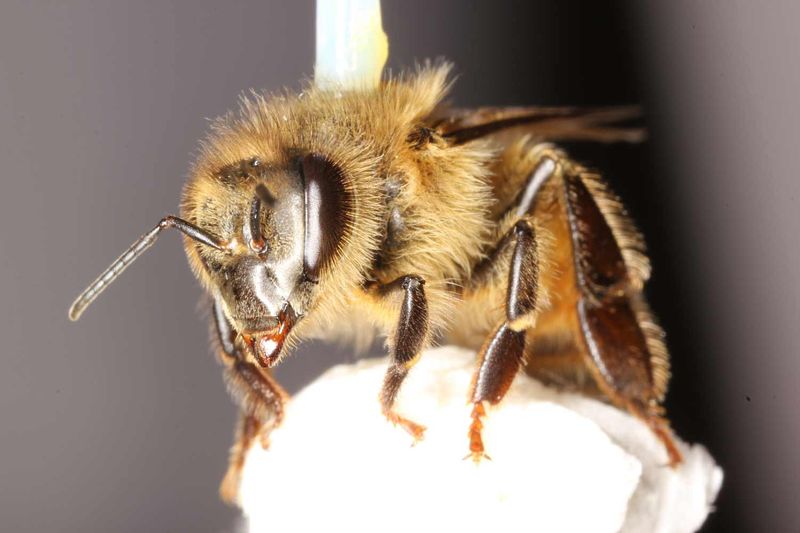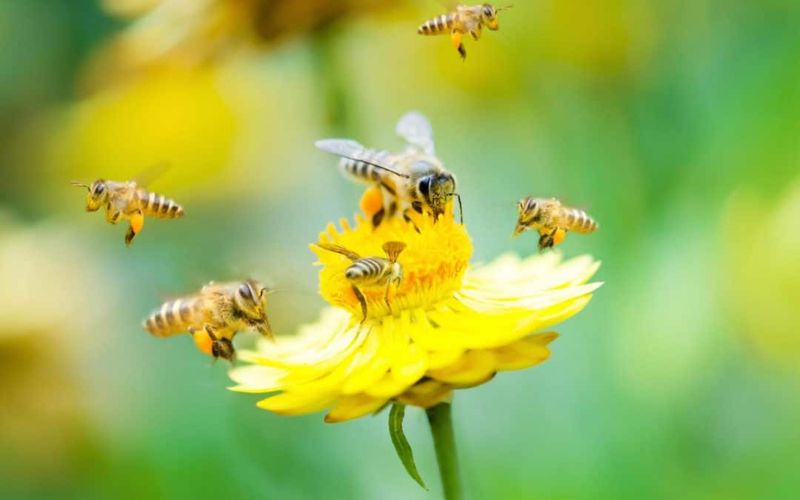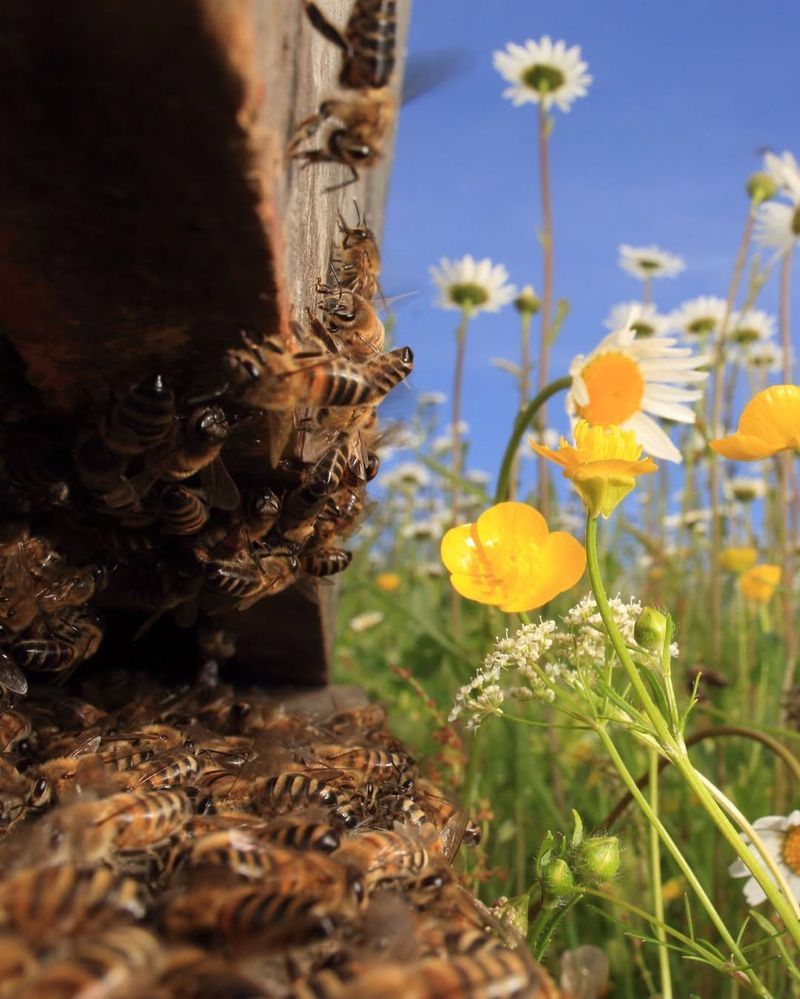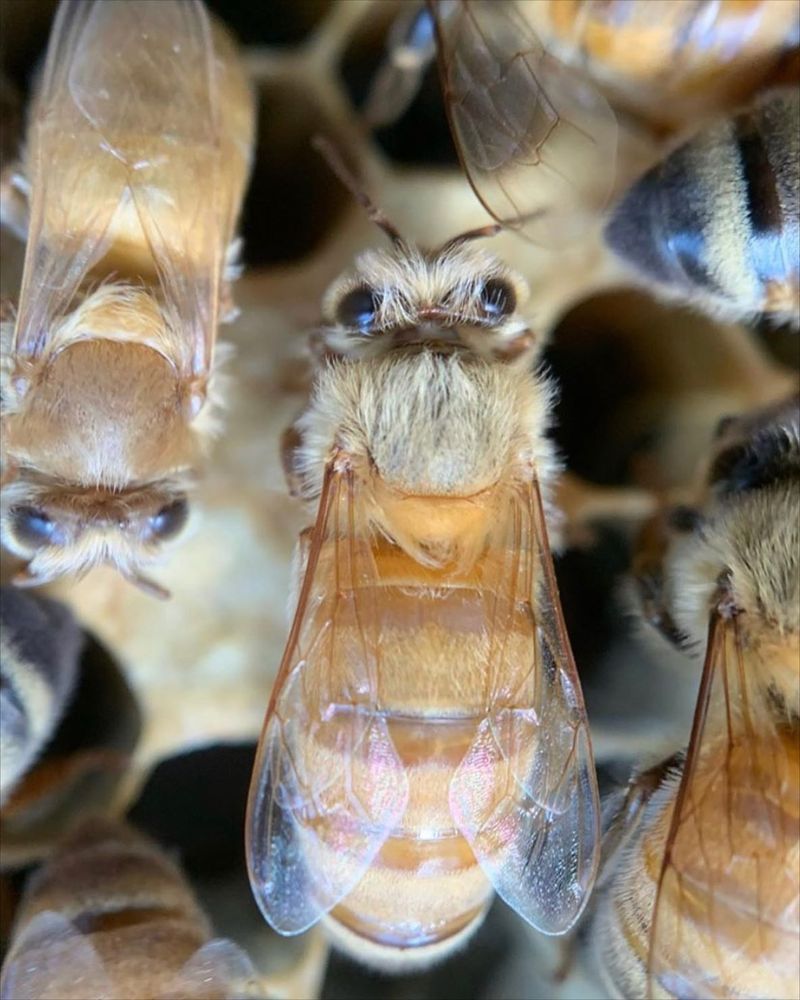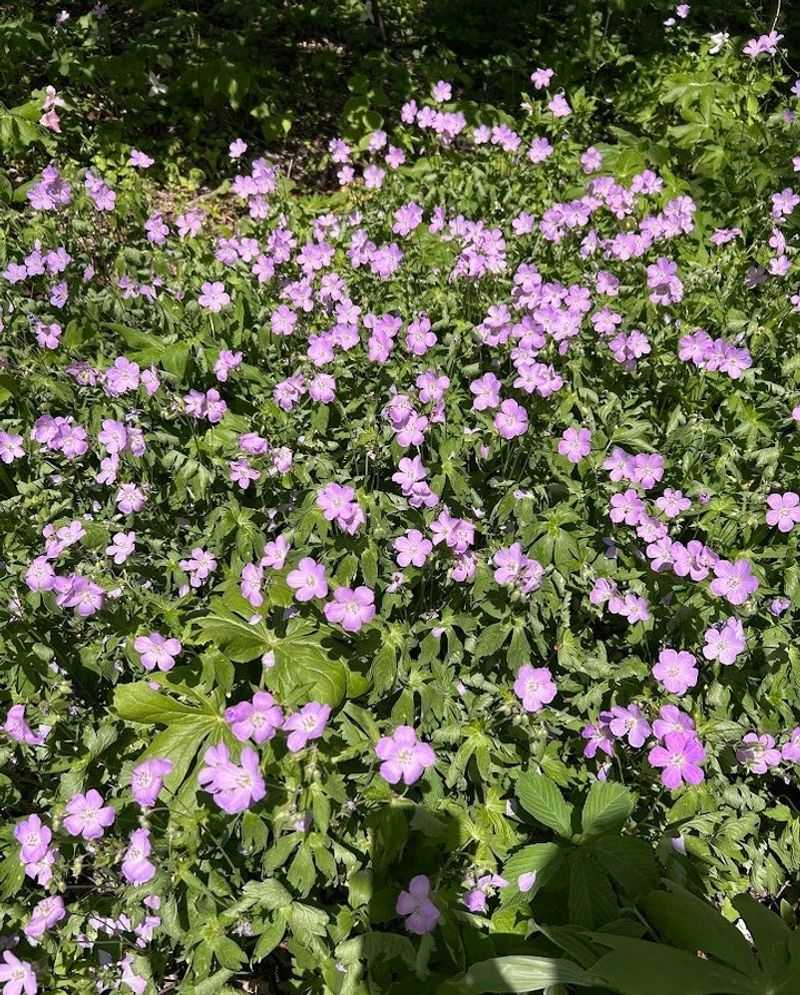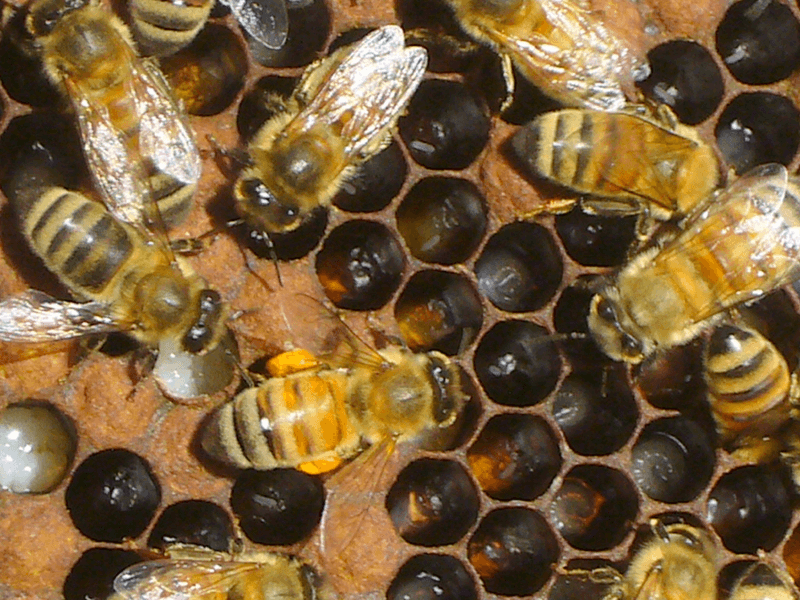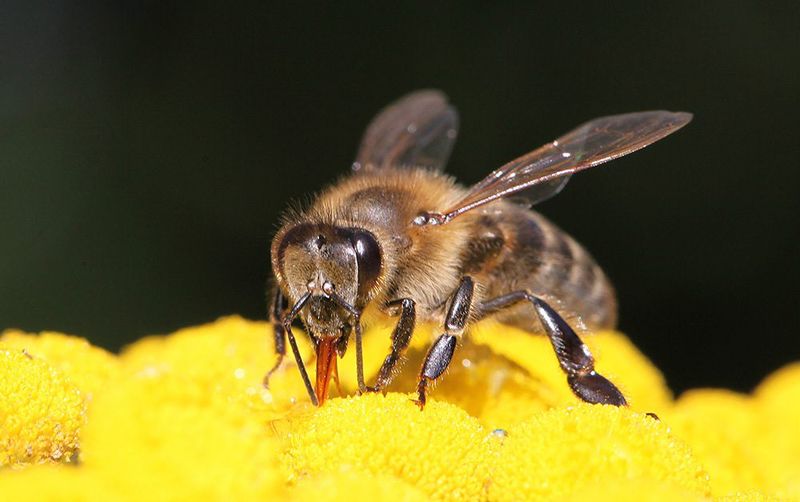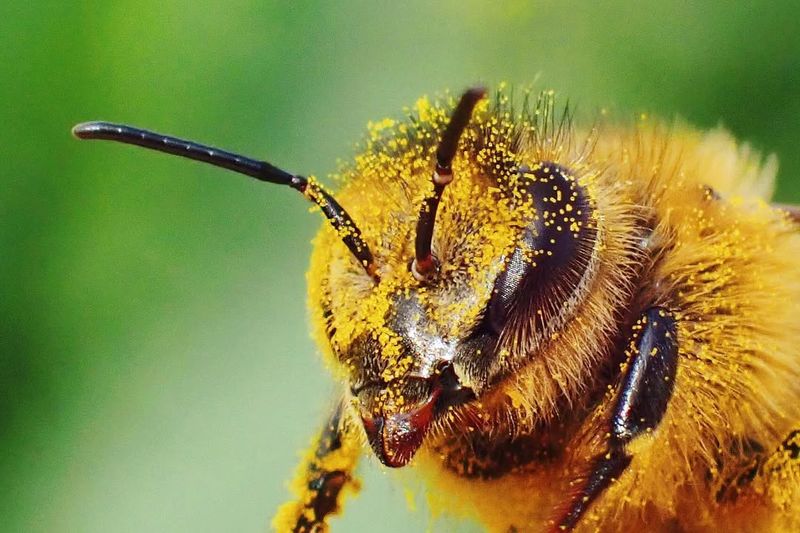Wisconsin gardens have always been a haven for bees, from the busy honeybees to the fuzzy bumblebees that visit our flowers each spring and summer.
But lately, something troubling is happening: fewer bees are showing up. In my own garden, I’ve noticed fewer bees visiting my flowers compared to a few years ago, which made me start investigating the causes.
Understanding why bees are vanishing from our yards is the first step toward bringing them back and protecting these essential pollinators that keep our gardens thriving.
1. Pesticide Use In Home Gardens
Many gardeners spray chemicals to control pests, but these products often harm bees too. Even products labeled as safe can contain ingredients that weaken bees or make them lose their way home.
Neonicotinoids are especially dangerous because they stick around in soil and plants for months. When bees collect pollen or nectar from treated flowers, they carry poison back to their hives.
For me, switching to natural pest control methods like hand-picking bugs or using soap sprays has made a real difference. My garden still looks healthy, and I see more pollinators visiting now than when I used chemical treatments regularly.
2. Loss Of Native Wildflowers
Wisconsin once had prairies and meadows filled with wildflowers that fed countless bees throughout the growing season. Today, many of these native plants have been replaced by lawns and non-native ornamentals that offer little food value.
Native bees evolved alongside local wildflowers like purple coneflower and wild bergamot. Without these familiar food sources, many bee species struggle to survive or simply move elsewhere.
Planting more native flowers has helped bring back a few familiar pollinators to my yard. These plants need less care than exotic varieties and bloom at times when bees need them most, creating a reliable food supply.
3. Habitat Destruction And Development
As cities and suburbs expand across Wisconsin, wild spaces where bees nest and forage disappear under buildings and pavement. This leaves bees with nowhere to live, even if flowers are nearby.
Ground-nesting bees need bare soil patches to dig tunnels, while other species rely on dead wood or hollow stems. Modern landscaping often removes these essential nesting sites in favor of tidy, manicured lawns.
I’ve started leaving small areas of my garden a bit messy on purpose, with bare ground and old plant stems standing through winter. These simple changes provide homes for native bees without making my yard look neglected or unkempt.
4. Climate Changes Affecting Bloom Times
Warming temperatures and unpredictable weather patterns are throwing off the timing between when flowers bloom and when bees emerge from winter dormancy. This mismatch means bees wake up to find no food available.
Spring now arrives earlier in Wisconsin, but not all plants and bees adjust at the same rate. Some flowers finish blooming before their pollinator partners become active, breaking relationships that developed over thousands of years.
I’ve noticed this in my own garden when early warm spells trick plants into blooming too soon. Planting a variety of flowers with different bloom times helps ensure something is always available when bees need it most.
5. Monoculture Lawns Replacing Diverse Gardens
The American obsession with perfect green lawns has created food deserts for bees across Wisconsin neighborhoods. Grass provides zero nutrition for pollinators, and weekly mowing eliminates any clover or dandelions that might sneak through.
Bees need diverse food sources throughout the season, not just one or two flower types. Large expanses of turf grass force them to travel farther for meals, wasting energy and increasing their exposure to dangers.
Reducing my lawn size and converting sections to pollinator gardens has been surprisingly easy. The flower beds require less maintenance than constant mowing and fertilizing, plus they attract beautiful butterflies and interesting bee species I’d never seen before in my yard.
6. Diseases And Parasites Spreading
Varroa mites have devastated honeybee populations across Wisconsin, weakening colonies and spreading deadly viruses. These tiny parasites attach to bees and drain their blood, making them vulnerable to other diseases.
Wild native bees face their own health challenges from parasites and pathogens that spread when different bee species share flowers. Stressed bees with poor nutrition become even more susceptible to these threats.
Supporting bee health means providing pesticide-free flowers and diverse food sources that strengthen their immune systems. Healthy, well-fed bees can better fight off diseases and parasites that would otherwise kill weaker colonies struggling to find adequate nutrition in degraded habitats.
7. Lack Of Water Sources
Bees get thirsty too, especially during hot Wisconsin summers when they’re working hard to cool their hives. Without accessible water nearby, they must travel long distances, which drains their energy and reduces foraging efficiency.
Many bees drown in deep water sources like ponds or pools because they can’t land safely. They need shallow edges or landing platforms where they can drink without falling in.
Adding a simple bee watering station to my garden was one of the easiest changes I made. A shallow dish filled with pebbles and fresh water attracts dozens of bees daily, especially during July and August when natural water sources often dry up completely.
8. Invasive Plant Species Taking Over
Aggressive non-native plants like buckthorn and honeysuckle are crowding out the native flowers that Wisconsin bees depend on for food. These invaders spread quickly and create dense thickets where little else can grow.
While some invasive plants do flower, they often bloom at times that don’t match local bee activity patterns. Their pollen and nectar may also lack the specific nutrients that native bees have evolved to need for proper development.
Removing invasive plants from my property and replacing them with native alternatives has been an ongoing project. The native plants establish slowly but eventually create a healthier ecosystem that supports not just bees but also birds and beneficial insects that help control garden pests naturally.

